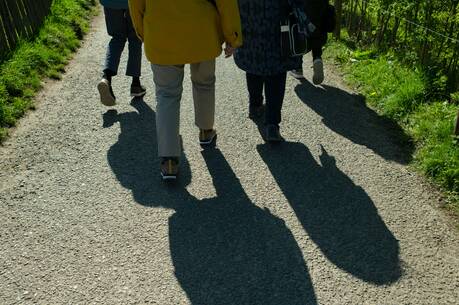The Chain of Discipleship
Unlike the other three Gospels, the Gospel of John does not depict Jesus calling the first disciples while walking along the shore of the Sea of Galilee. It is John the Baptist who points two of his disciples toward “the Lamb of God.” As in the other Gospels, they take heed and follow Jesus. But there is a different dynamic in John’s Gospel. Jesus has not called these two, and seeing them follow, he turns and asks them, “What are you looking for?” Their reply might seem odd to us at first: “Where are you staying?” Here the Evangelist introduces one of the key theological emphases of this Gospel: abiding, or staying with Jesus. The Greek verb menein, “to abide,” is repeated twice more, as the two went “and saw where Jesus was staying (menei), and they stayed (emeinan) with him.” Later, in John 15, the image of the vine and branches helps us envision what it means to be intimately connected to and abide in Jesus and the One who sent him.
In the Fourth Gospel the call to discipleship comes through the witness of someone else. John the Baptist brings Andrew and another unnamed disciple to Jesus. Andrew then brings his brother, Simon Peter, to Jesus (notice that Peter is not the first follower in John’s Gospel). Later, Philip brings Nathanael to Jesus (1:45-51), and the Samaritan woman brings her townspeople to him (4:29-42). Today’s readings show the diverse ways in which the call to discipleship can come. Samuel has a direct experience of God and, with the help of a more experienced companion, is able to understand what God is asking. In the Gospel, the call comes through the mediation of another’s witness.
In whatever way the call to discipleship comes, Paul reminds us that we do not encounter the Holy as disembodied spirits. Rather, our bodies are sacred, “temples of the Holy Spirit.” That Jesus took on human flesh and that God raised him bodily underscore the importance of the body. A corporeal spirituality helps us counter any exploitation of the body: in the sex trade, or overexposure in the manner of dress, or the battering of bodies with abuse or torture, or the devaluing of aging bodies. It is through our bodies that we experience godliness, and it is in them that we glorify God.
This article also appeared in print, under the headline “The Chain of Discipleship,” in the January 5, 2009, issue.







